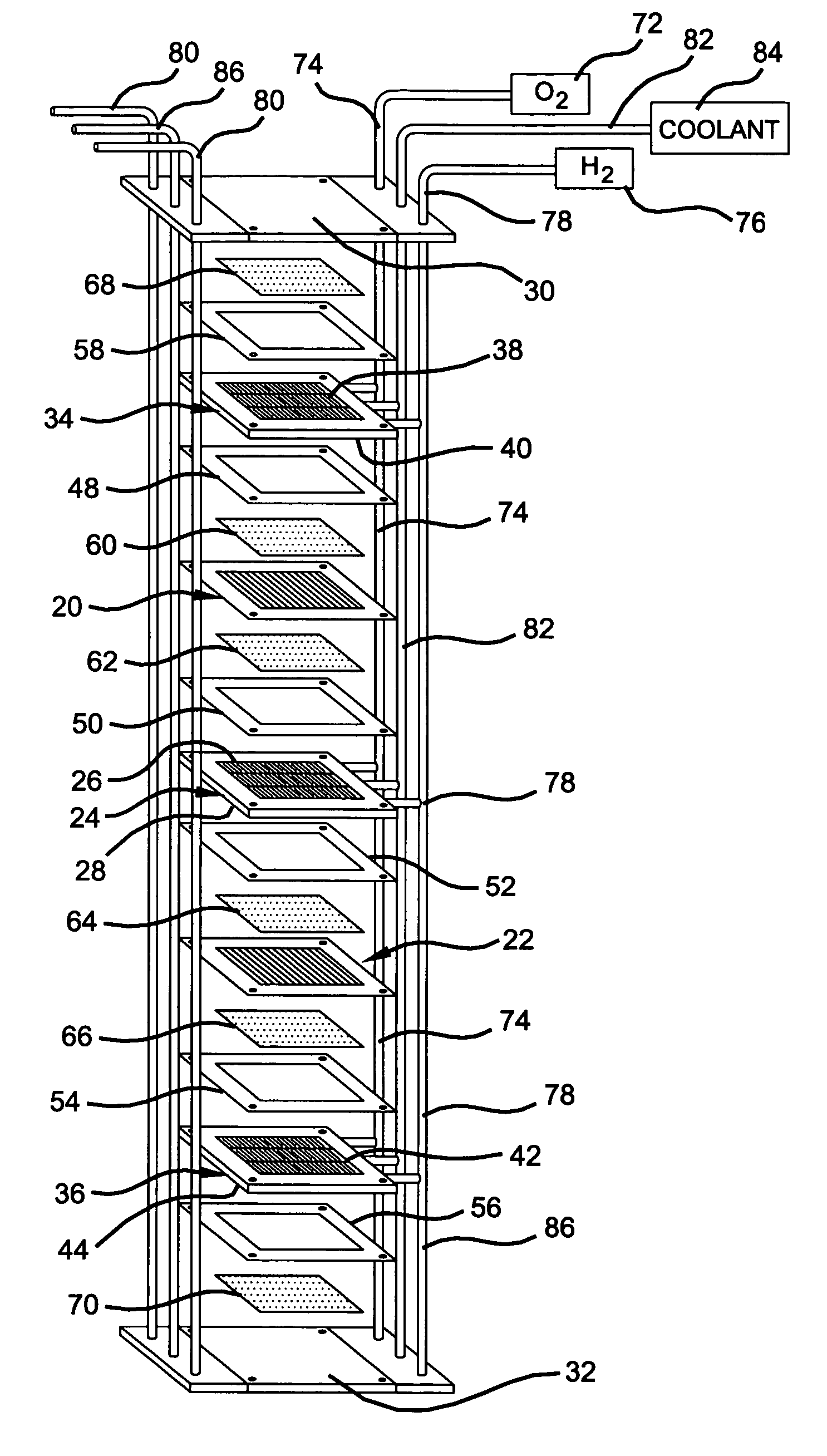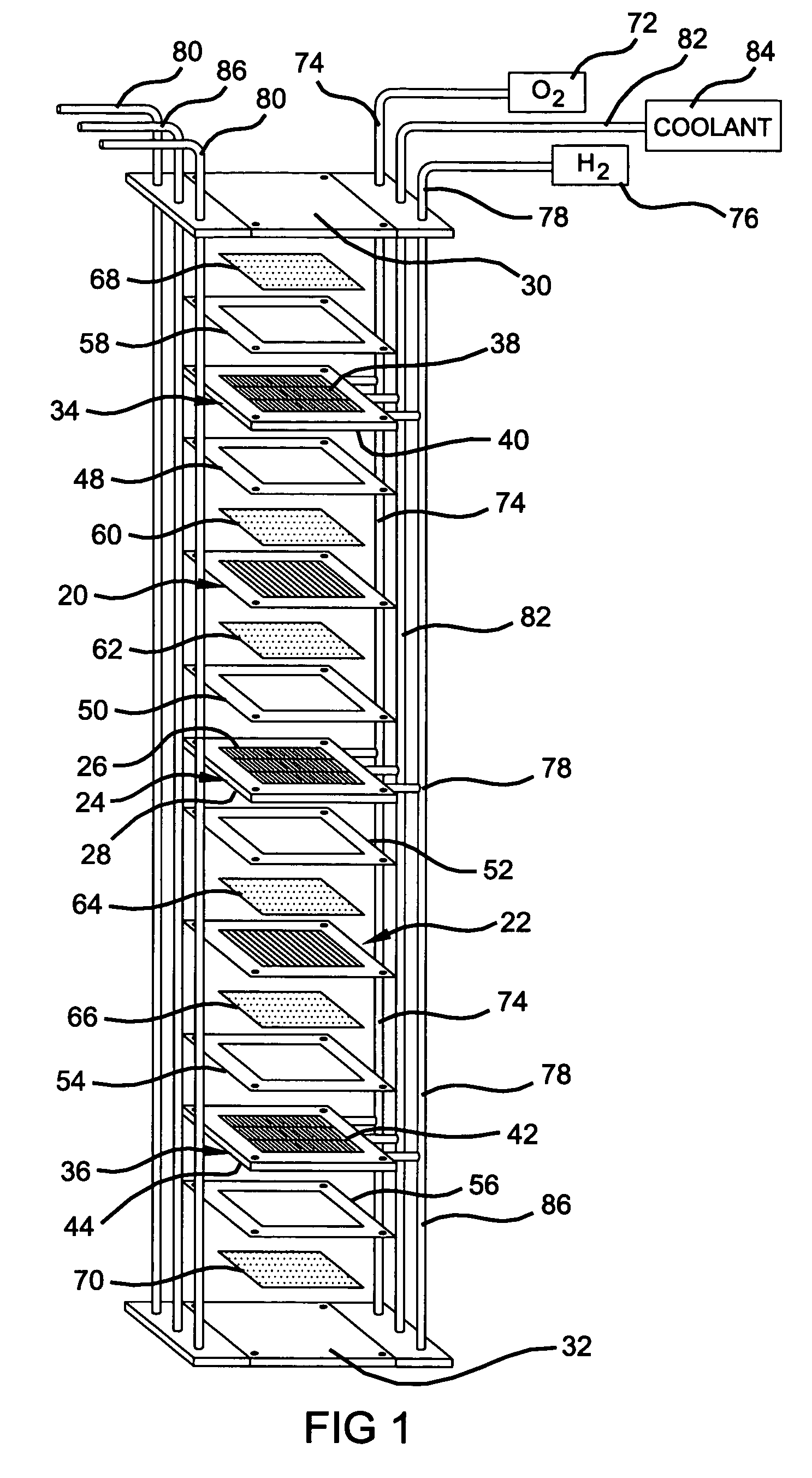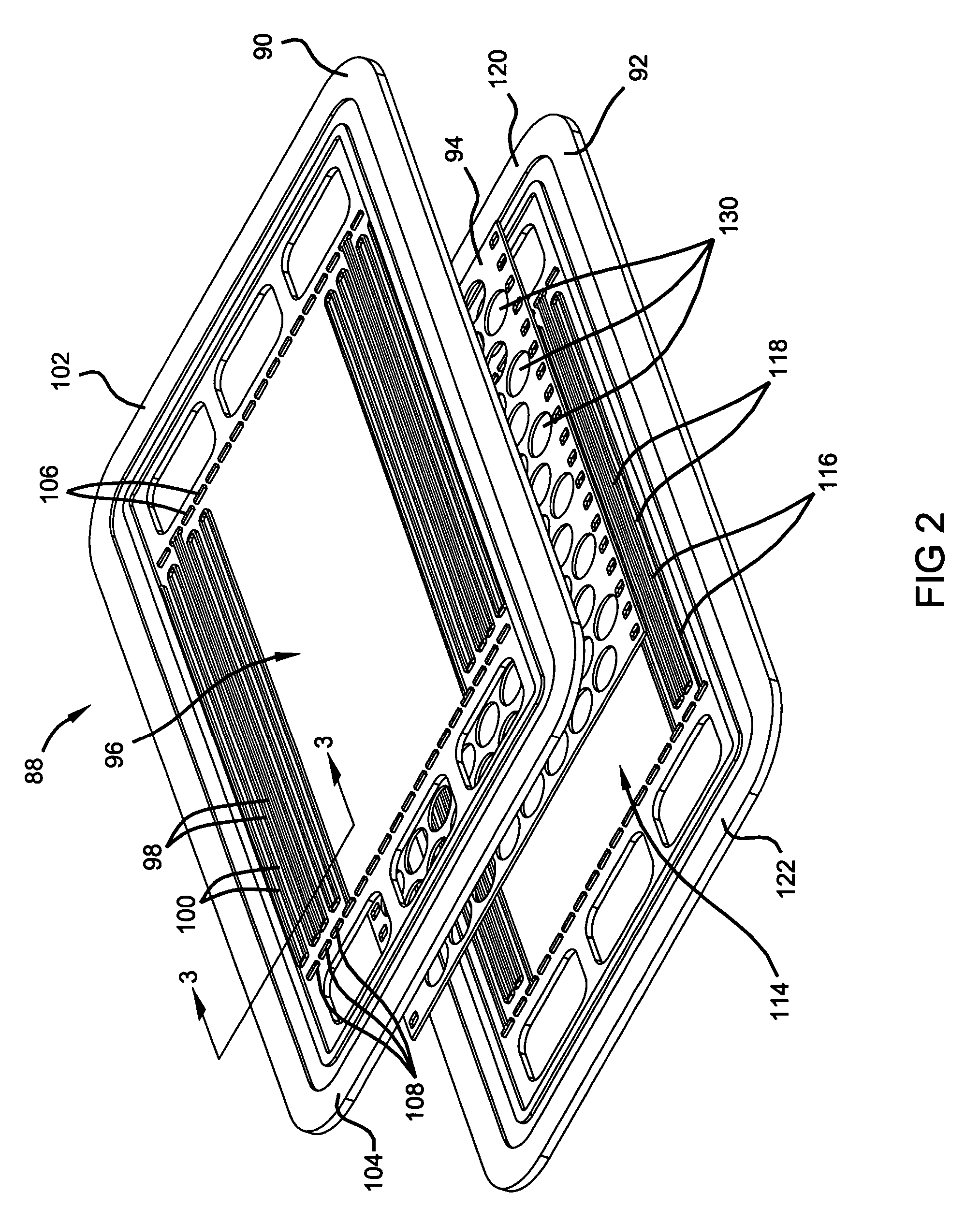Laser welding of conductive coated metallic bipolar plates
a technology of metallic bipolar plates and laser welding, which is applied in the direction of sustainable manufacturing/processing, final product manufacturing, manufacturing tools, etc., can solve the problems of reducing the amount of chromium available for use, reducing the mechanical durability and hydrogen ion transport efficiency of the fuel cell, and reducing the corrosion resistance of the alloy
- Summary
- Abstract
- Description
- Claims
- Application Information
AI Technical Summary
Benefits of technology
Problems solved by technology
Method used
Image
Examples
example 1
[0041]Various laser welds on conductive carbon coated stainless steel plates were tested by Cross Section Examination and oxalic acid etching via ASTM standards and by Woodcock Corrosion Testing. The Cross Section Examination produced no evidence of sensitization occurring in the stainless steel plates. In the Woodcock Corrosion Testing, there was some attack of the welds, however, there was no evidence of detrimental sensitization occurring in the stainless steel plates. The details of the testing of the stainless steel plates are shown in the table below.
[0042]
TABLETestsWoodcock Corrosion Test andCross Section ExaminationSample Material316L Stainless Steel 0.15 mm inthickness# of Laser Welds20TestedType of LaserNd: YAGOrganic CoatingCarbon-filled organic coating, suchas described in U.S. Pat. No. 6,372,376 B1Solution18% Nitric Acid11% HF Acid71% H2OTemperature140° F.Duration2 hours
[0043]Thus, the present invention allows bipolar plates 88 to be economically and efficiently produce...
PUM
| Property | Measurement | Unit |
|---|---|---|
| thickness | aaaaa | aaaaa |
| thickness | aaaaa | aaaaa |
| thickness | aaaaa | aaaaa |
Abstract
Description
Claims
Application Information
 Login to View More
Login to View More - R&D
- Intellectual Property
- Life Sciences
- Materials
- Tech Scout
- Unparalleled Data Quality
- Higher Quality Content
- 60% Fewer Hallucinations
Browse by: Latest US Patents, China's latest patents, Technical Efficacy Thesaurus, Application Domain, Technology Topic, Popular Technical Reports.
© 2025 PatSnap. All rights reserved.Legal|Privacy policy|Modern Slavery Act Transparency Statement|Sitemap|About US| Contact US: help@patsnap.com



